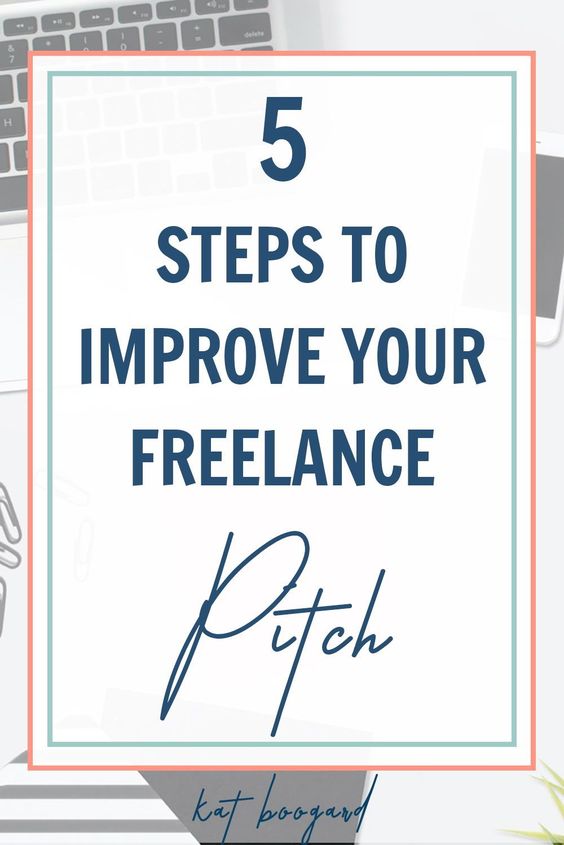5 Reasons You’re Not Hearing Back About Your Freelance Pitch (and How to Fix Them)
Jul 30, 2018

Post updated: December 4, 2020
You take a deep breath and hit “send” on your freelance pitch—feeling confident that it should only be a few hours before you’re pinged with an eager, “We can’t wait to work with you!” message from that editor.
Days later, there’s still nothing. Two weeks later? You’re being taunted with an empty inbox. The infuriating sound of crickets haunts your dreams.
What gives? You feel like you did everything right, so why aren’t you hearing anything back about your pitch?
Here’s the deal: Freelance pitching is hard work. There’s a lot that goes into doing it right—and, when the people you’re getting in touch with are insanely busy and buried under emails already, crossing all of your t’s and dotting all of your i’s still isn’t a guarantee that you’ll get a response.
But, with that said, there are a few mistakes that I see freelancers make with their pitch emails time and time again—and, they could be a big piece of the puzzle when it comes to why your response rate is so dismal.
If you haven’t already read my complete guide to freelance pitching, I definitely recommend starting there. But, if you’re just looking for a quick way to diagnose whether your own pitch emails are falling short? Well, that’s what this post is here for. Let’s get to it.

1. You’re not doing your research.
An effective freelance pitch email should introduce you, promote the expertise you bring to the table, and share a few related writing samples. However, the bulk of your message should be dedicated to the actual pitch—meaning it should outline the story you want to write for that outlet.
This is the most important part of your email, because it’s the piece where you prove what value you can bring to the table for that publication or outlet.
Do you know what that means? Your idea needs to be good—and not just good, but highly relevant to who you’re pitching.
It’s going to involve some elbow grease to understand what sort of pitches that outlet might be looking for.
Do they tend to favor personal essays? Do they publish mostly tutorial-style content? Do they want something long-form and heavily researched? Who is their target audience? What voice and headline style do they use? What goals and challenges does that audience have? How will your written content help address those?
Those are all important facts that could influence your pitch—and they’re things you’ll only begin to understand through some thorough research. Dig into their website and existing content to make sure you have a solid grasp on their overall style and approach.
There’s one more thing to check that’s often overlooked: Whether they’ve already published your story idea (or something remarkably similar to it).
A quick Google search can help you figure out whether you’re pitching an article idea that’s truly fresh and original. Search “site:[website address] keyword related to your search” to bring up any relevant content.

2. Your ideas aren’t special.
Ouch. Brutal, right? Your parents always told you that you were special and uniquely qualified for whatever you wanted to do. But, in reality, the freelance landscape is competitive, and it takes some work to stand out.
The best way to do that is by making sure that whatever content ideas you’re pitching are truly unique—that you’re bringing some sort of fresh perspective, experience, or idea to the table.
Trust me when I tell you that if your pitch is truly amazing, even the pickiest of editors won’t care if you have two months of writing experience of 20 years. Having a great story idea is the best way to get your foot in the door.
But, it’s not always that easy. In fact, coming up with brilliant, jaw drop-worthy stories can be downright hard—and, it’s a step that many freelance writers sort of, well… to put it bluntly, half-ass.
I get it. You’re eager to get that email sent off and see what happens. However, this isn’t a step that you should rush through. After you’ve done your research, really take the time to think of some topics and headlines that truly stand out. You need a clear angle for your story, and not just a nugget of an idea.
For example, if I’m pitching a site that’s dedicated to all things freelancing, which article idea do you think they’d be more interested in?
- Making Money Freelancing
- Here’s How I Doubled My Freelance Income in One Year
Are you thinkin’ number two? Me too. Not only is it a way grabbier headline and a way less vague topic, but it’s also something that only I could write—since the pitch incorporates insider insights and experiences that only I have.
So, don’t gloss over the idea generation part of the process. Take your time with it if you have to—it could be what puts you at the top of the pile.
3. Your email is way too long.
Cringe. This was a mistake I made with all of my early freelance pitches. The introduction portion of the email (which, realistically, should’ve only been a couple of sentences) was several paragraphs long.
I talked about where I went to college and what I got my degree in. I mentioned my background in marketing. I explained how I got into freelancing.
I went on and on and on about a bunch of stuff that really didn’t matter to someone who ultimately only wanted to know if I could string some sentences together and had good story ideas to offer.
I know it’s tempting to want to cram as much information as possible into your email—you think that if only you could get that editor or contact to truly understand who you are, you’d be a shoo-in.
But, this is the hard-to-hear truth: The people you’re pitching are busy. And, if they click open your email to see endless walls of text? Well, you’re probably headed straight to the recycling bin. You need to keep things short and easy to skim.
Here’s a super barebones template that shares what my typical pitch email looks like:
– – –
Hey [Name],
Approximately three sentences introducing myself and what I do.
One sentence setting up my pitch(es):
Article Idea #1
Description that shares the unique angle of my piece.
One sentence explaining similar outlets I’ve been published that they can check out to get a better sense of my writing style.
- Writing Sample #1
- Writing Sample #2
Looking forward to hearing from you soon!
Best,
Kat
– – –
And that’s it. I know that, as a writer, it’s tough to kill your darlings—every sentence you have in your existing 1,600-word email seems important.
So, here’s an exercise that really helps me trim things down: I write my email like I would if that editor had endless time and a relentless attention span. The act of getting that all out of my brain and down on paper is still cathartic.
Next, I go through that rough draft with a fine-tooth comb. With every single sentence, I ask myself: Would this editor or person actually care about this? If I even so much as hesitate, that sentence is deleted.
After that, I clean things up and make sure the message flows. But, each and every time, I’m amazed at how I’m able to pretty much cut my entire email in half. Give it a try!
4. You’re not following directions.
If you’re pitching an outlet that frequently works with freelancers, then chances are good that they have some existing submission instructions for people just like you.
That can be reassuring, because it means that they accept pitches and are always on the lookout for good ideas.
However, it also means that you need to be prepared to follow those directions—yes, every last one. I know you want to look for loopholes or pretend that those instructions apply to everybody else (surely, not you!), but they exist for a reason.
If they want you to use a certain subject line, use it. If they want you to include a certain number of writing samples, include that many—no less, no more. If they want you to end your email by explaining your favorite pizza topping (trust me, I’ve seen places do this as a way of testing whether or not you read all of the directions), make sure you do so.
Yes, outlets want writers who have good ideas and a lot of skill. But, they also want writers who are easy to work with—who can follow creative briefs, communicate well, and meet their deadlines. The best way to prove that you can do that is by following any instructions they outline right out of the gate.
Where should you look for these directions? Their website. Scroll all the way to the bottom navigation menu and look for any sort of link that says “Submissions,” “Contributors,” “Content Guidelines,” “Pitches,” “Write for Us,” or anything else like that.
Don’t find any there? It’s still worth a quick Google search for something like “[outlet name] submissions” or a similar key phrase to see if you can dig up any other important information.
Be forewarned, not every place has detailed directions that you need to follow. But, if you they do, you need to make sure that you pay attention to those. Not doing so is a surefire way to have your email go unanswered.

5. They’re just not interested.
I know—this is another brutal one. But, bear with me.
Sometimes there are forces way beyond your control that contribute to the fact that you aren’t hearing back.
Maybe they aren’t currently looking to bring additional writers on. Maybe they’ve run out of budget for freelancers this quarter. Maybe the editor is on parental leave. Maybe they’ve put a pause on publishing while they re-work their strategy.
There could be a whole host of reasons—all that have nothing to do with your talent or ideas.
This one is frustrating, because there’s nothing actionable you can do to get a response or improve your email. It’s more luck than anything.
However, I do recommend still doing what you can to forge a relationship and start to build some name recognition. Send that editor a connection request on LinkedIn. Make sure you follow that outlet on Twitter and interact with their posts from time to time. If you read something that they published and you love, share it on your own accounts.
Do what you can to keep up some level of interaction (on a non-pesky level, of course). If and when that outlet is interested, your effort to engage could serve you well.
Go Get ‘Em, Freelancer!
If I had a dollar for every pitch email I sent that went unanswered, you can bet I’d be retired on the shores of Lake Superior by now. Dreamy.
Not hearing anything back is disheartening, but that experience has also helped me refine my approach and increase my chances of at least hearing something back from the outlets I pitch.
Avoid the all-too-common mistakes I’ve outlined (and, uhhh… made myself) above, and I’m confident that you’ll improve your response rates too. Good luck!